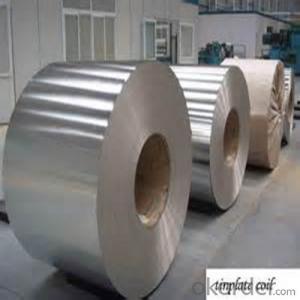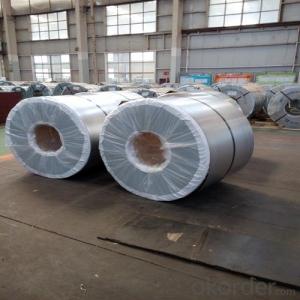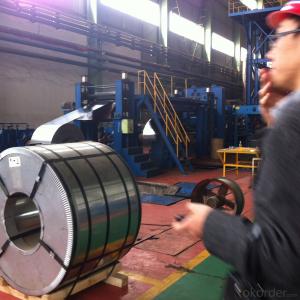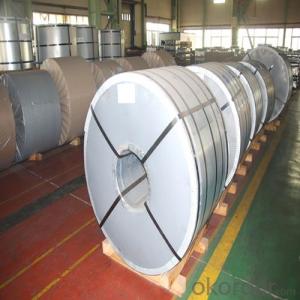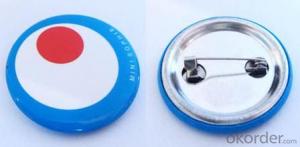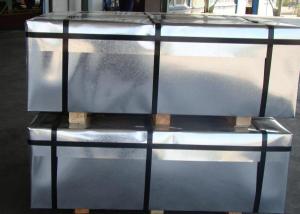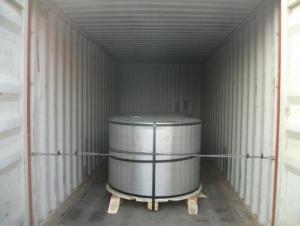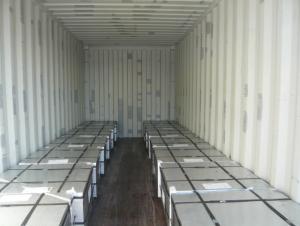Prime Quality Tin Free Steel for Metal Caps
- Loading Port:
- Shanghai
- Payment Terms:
- TT OR LC
- Min Order Qty:
- 25 m.t.
- Supply Capability:
- 25000 m.t./month
OKorder Service Pledge
OKorder Financial Service
You Might Also Like
Specification
1.Structure of Prime Quality Tin Free Steel for Metal Caps Description
Tin mill products include electrolytic tinplate, electrolytic chromium coated steel(also referred to as tin free steel or TFS), and black plate, the uncoated steel. Tinplate is a thin steel sheet coated by tin, while TFS is an electrolytic chrome plated steel consisting of a thin layer of chromium and a layer of chromium oxide deposited on the steel base. Both of them have a beautiful, metallic luster as well
as excellent properties in corrosion resistance and paintability.
2.Main Features of the Prime Quality Tin Free Steel for Metal Caps
Chromium coated
Sulphur Blackening Resistance: TFS has sulphur resistance properties, which can be used for canning protein- rich food such as fish.
Filiform Rust Resistance: Filiform is superficial corrosion of the base metal. TFS has a superior base metal which makes it corrosion resistance.
Coating: The coating in TFS is not amphoteric (having the characteristic of an acid and a base, is a compound that can react as either an acid or a base). This means that detergents and dispersion colors can be packed easily.
3.Prime Quality Tin Free Steel for Metal Caps Images

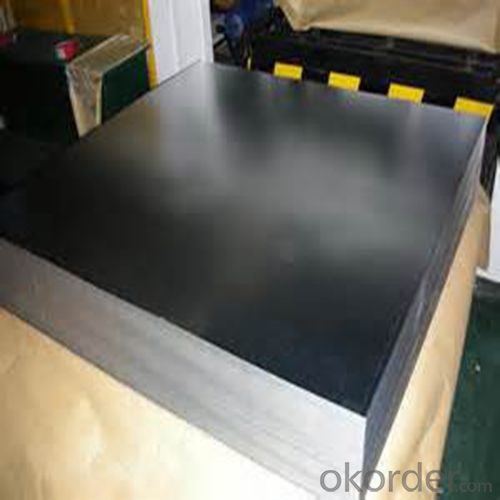
4.Prime Quality Tin Free Steel for Metal Caps Specification
Thickness 0.14mm to 0.35mm
Width 500mm to 1200mm
Length : As per customers specification
Temper : T1 to T5, DR 7 to DR 9
5.FAQ of Prime Quality Tin Free Steel for Metal Caps
-What is MOQ?
Our MOQ would be 25 tons.
- Do you only have prime quality TFS ?
We can supply both prime and second quality TFS.
- Q: What are the main applications of tinplate in the cosmetics industry?
- Tinplate is extensively used in the cosmetics industry for packaging purposes. It is commonly employed for manufacturing containers such as cans, jars, and tubes for various cosmetic products like creams, powders, lip balms, and hair care products. Tinplate provides excellent protection against moisture, light, and other external factors, ensuring the longevity and quality of the cosmetic products. Additionally, its malleability allows for intricate designs and attractive branding possibilities, making it a popular choice in the cosmetics industry.
- Q: Can tinplate packaging be used for personal care products?
- Yes, tinplate packaging can be used for personal care products. Tinplate is a durable and versatile material that provides excellent protection for various products, including cosmetics, lotions, and other personal care items. Its ability to resist corrosion and maintain the product's quality makes it a suitable choice for packaging in the personal care industry.
- Q: What are the main applications of tinplate in the photography industry?
- Tinplate is commonly used in the photography industry for the production of film canisters and film backing, which are essential components for storing and protecting photographic film. Tinplate's durability, lightness, and ability to provide airtight protection make it an ideal material for these applications. Additionally, tinplate can also be used for the production of photographic chemicals and toners, ensuring their safe and efficient storage.
- Q: What are the latest innovations in tinplate technology?
- Some of the latest innovations in tinplate technology include the development of lightweight tinplate materials that offer the same level of protection and strength as traditional tinplate, but with reduced material usage. Additionally, advancements in coating technologies have allowed for the development of tinplate with enhanced corrosion resistance, ensuring longer shelf life for packaged products. Furthermore, the introduction of digital printing techniques has revolutionized the design capabilities for tinplate packaging, allowing for more intricate and customizable designs. Overall, these innovations aim to improve sustainability, product preservation, and visual appeal in the tinplate industry.
- Q: How does tinplate handle exposure to extreme temperatures?
- Tinplate is known for its excellent resistance to extreme temperatures. It can handle exposure to both high and low temperatures without any significant impact on its structural integrity or performance.
- Q: What are the common closure options for tinplate containers?
- The common closure options for tinplate containers include twist-off caps, screw caps, snap-on lids, and pressure-sealed lids.
- Q: How does tinplate impact the overall product safety?
- Tinplate is known for its excellent barrier properties, durability, and resistance to corrosion, making it a popular choice for packaging food and beverages. Its impact on overall product safety is significant as it helps to prevent contamination, preserve product freshness, and extend shelf life. Tinplate acts as a protective barrier between the product and external factors such as light, air, moisture, and bacteria, ensuring that the contents remain safe and uncontaminated. Additionally, tinplate is non-toxic, making it a safe material for packaging edible goods. Overall, tinplate positively contributes to product safety by providing a reliable and secure packaging solution.
- Q: How is tinplate cut and shaped for different packaging designs?
- Tinplate is cut and shaped for different packaging designs using various techniques such as shearing, blanking, and deep drawing. Shearing involves cutting the tinplate into desired sizes using a sharp blade or scissors. Blanking is a process where the tinplate is cut into a specific shape, usually using a die and a press. Deep drawing involves stretching the tinplate over a die to create a three-dimensional shape, often used for cylindrical or curved packaging designs. These techniques allow for precise and customized shaping of tinplate to meet different packaging requirements.
- Q: What are the different ways to stack tinplate cans?
- There are several different ways to stack tinplate cans, including vertically, horizontally, in a pyramid formation, or in a grid pattern. The choice of stacking method may depend on factors such as available space, stability required, or ease of access.
- Q: What are the main factors influencing the price volatility of tinplate?
- The main factors influencing the price volatility of tinplate include changes in global supply and demand, fluctuations in raw material costs, geopolitical events affecting trade and tariffs, technological advancements impacting production processes, and shifts in consumer preferences and market trends.
Send your message to us
Prime Quality Tin Free Steel for Metal Caps
- Loading Port:
- Shanghai
- Payment Terms:
- TT OR LC
- Min Order Qty:
- 25 m.t.
- Supply Capability:
- 25000 m.t./month
OKorder Service Pledge
OKorder Financial Service
Similar products
Hot products
Hot Searches
Related keywords


